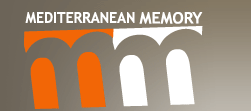The Institut du Monde Arabe
Introduction
The first draft of the project to create an institute for Arab-Muslim culture and civilization dates back to 1980, during the presidency of Valéry Giscard d'Estaing. The idea had been proposed in 1974. Behind the stated purpose of spreading culture there was an implicit desire by the President to improve relations between France and the Islamic-Arab world.
Indeed several conflicts – the wars of independence in France's colonies, her intervention in Suez and the Lebanon, her support for the state of Israel – had all cast a pall over Franco-Arab diplomacy during the previous decades. Since the late 1970's building new multilateral relations had been an essential part of French foreign policy. Thus the project was confirmed in consultation with members of the Arab League (or the League of Arab States, a regional organization with observer status at the United Nations), each of which was given a role in the institute's administration.
When he became President in 1981, François Mitterrand inherited the project and was keen to bring it to fruition. An architect, Jean Nouvel, was chosen to take the institute off the drawing board and on to the street. Nouvel designed an unusual building, described as unique of its kind, using the idea of the oriental shanasheel or mashrabiya – with his team, he covered the entire structure with 240 mobile panels which regulated the brightness and temperature inside the institute.
As the following excerpt shows, François Mitterrand opened the Institut du Monde Arabe (IMA) in 1987:
The opening of The Arab world institute in Paris
Located in Paris' 5th arrondissement, one of the oldest districts of the French capital, the Institut du Monde Arabe looks out over the Seine, with Mohammed V Square on one side (named after the late King of Morocco) and not far away Paris' principal mosque. The French authorities' plan to give this small area of the 5th arrondissement an Eastern feel was a way of making the Franco-Arab partnership something tangible, with the Institut du Monde Arabe as a symbol of that reality.
But the Institute's status and its management by a partnership of the founding countries, has made it susceptible to any deterioration in international relations, indeed it suffers whenever there is a conflict or even diplomatic tension between the founding partners. It has had to forge its own path between the vagaries of international diplomacy.
So it's interesting to look at the different missions the Institutehas set for itself as policies have altered over the thirty-five years of its existence, with culture sometimes becoming confused with politics.
Firstly, we're going to look at its activities as a museum, through its permanent collections. Secondly, we'll focus on the more contemporary cultural activities, with its temporary exhibitions. Finally, we'll see another dimension of the Institute, that of an interactive space with event-based activities.

Introduction
I. History and permanent collec...
II. Contemporary cultural activ...
III. The events: an interactive...
Bibliography


Abstract
The first draft of the project to create an institute for Arab-Muslim culture and civilization dates back to 1980, during the presidency of Valéry Giscard d'Estaing. The idea had been proposed in 1974. Behind the stated purpose of spreading culture there was an implicit desire by the President to improve relations between France and the Islamic-Arab world...
Author
Kmiecik Patryck
Student master European Studies (University of Aix-Marseille)
Berlemont Ilan
Student master European Studies (University of Aix-Marseille)






